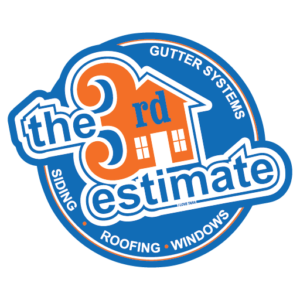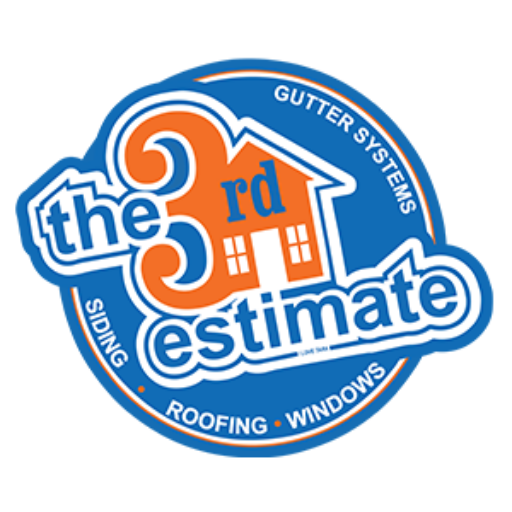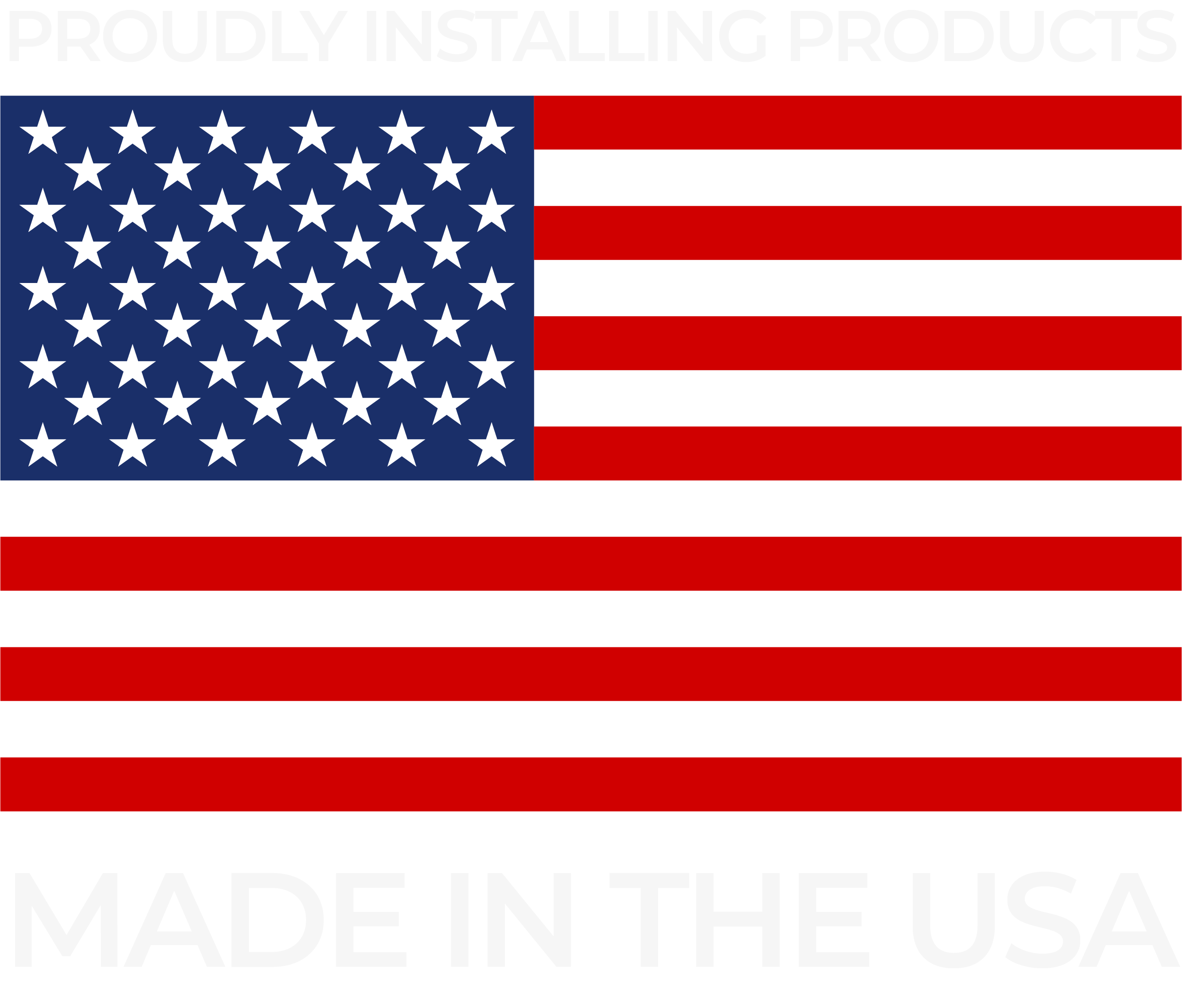Transform Your Home with Confidence: Solon’s Trusted Roofing Contractor
If you’re a homeowner in Solon, Ohio, you want a cost-effective and durable roofing solution that protects your home and enhances its curb appeal. Shingle roofs are one of the best options for homes in this area due to their affordability, longevity, and ease of installation. Here’s why shingle roofing might be the perfect fit for your home.
Book Your Free Estimate Today!
Hear Why We are the Best Roofers in Solon, OH
Top Quality Residential & Commercial Roofing
Whether repairing or installing a new roof on your home or business, you can count on The Third Estimate’s exacting standards and quality services. We have over 31,500 happy customers and maintain an A+ rating with the Better Business Bureau. Find out why your neighbors in Solon choose to trust us with their home improvement needs.
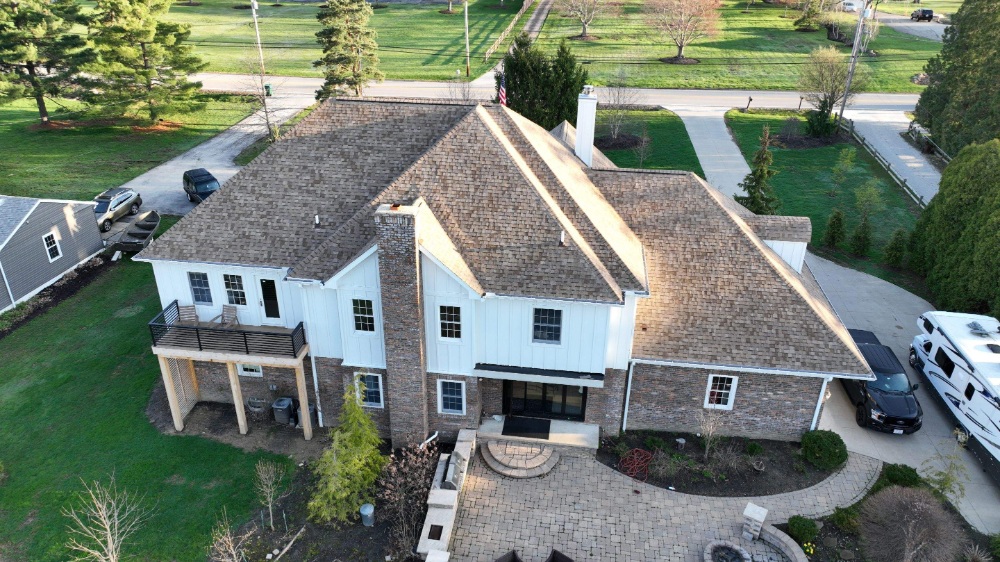
Extend Your Roof’s Life
Why Shingle Roofs Are Ideal for Solon Homes
Reliable Performance & Weather Resistance
Shingle roofs are designed to withstand high winds and are fire-resistant, making them a great option for homes in areas that experience storms and extreme weather. Unlike some other materials, asphalt shingles:
- Hold up well against strong winds and heavy rain
- Offer better fire resistance than wood or shake roofs
- Provide solid protection at an affordable cost
Long-Lasting Durability
A roof is a long-term investment, and asphalt shingles typically last between 20-30 years. While other roofing materials like metal or tile may last longer, they come at a significantly higher upfront cost. Here’s how different roofing materials compare:
- Asphalt Shingles: 20-30 years (most cost-effective option)
- Metal Roofing: 50+ years (higher cost)
- Tile Roofing: 50+ years (most expensive option)
For most Solon homeowners, asphalt shingles offer the best balance of cost, durability, and performance. That’s why hiring a roofing contractor in Solon is essential to ensure quality work.
Stylish & Customizable
Your roof plays a major role in your home’s curb appeal. Shingle roofs come in a variety of colors and styles, allowing you to choose the perfect look for your home.
- Asphalt Shingles: Available in traditional 3-tab or premium architectural styles
- Metal Roofing: Offers solid colors or a textured finish
- Tile Roofing: Comes in a range of unique designs but at a higher price
With asphalt shingles, it’s easy to find a style that complements your home’s architecture and personal taste.
Our Services in Solon, OH:
Residential Roofing
Whether your roof is aging, damaged, leaking, or stained, our experienced team provides high-quality residential roofing services to ensure your home is protected and looks its best.
Wind & Hail Insurance Inspections
Our Insurance Specialists Team offers free inspections and will handle the hassle of working with your insurance adjuster, ensuring a smooth and stress-free process.
Commercial Roofing
We provide complimentary evaluations of your commercial roof, complete with dimensions and photos of current conditions. If a leak can be fixed with sealant during the inspection, we will attempt to fix it at no charge.
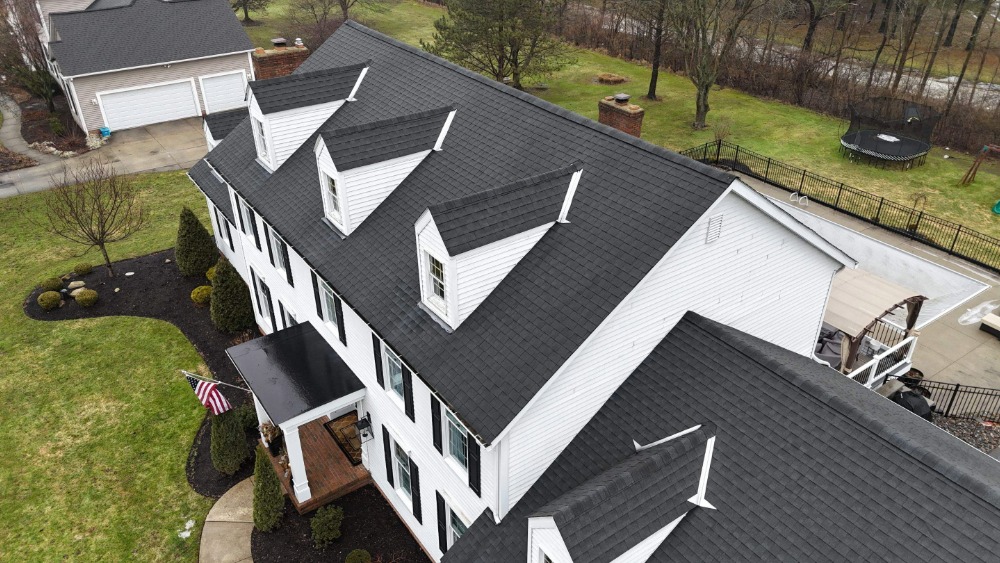
Let The Third Estimate Take the Stress Out of Your Roof Repair or Replacement!
We know that roof repair and replacement is a major investment in what may be your biggest asset–your home. That’s why we listen carefully to your concerns and provide quality service at budget-friendly prices. We’re a family-owned business that’s small enough to listen and big enough to deliver!
Shingle Roofing in Solon – A Smart Investment for Your Home
Benefits of Asphalt Shingles & the Owens Corning Roofing System
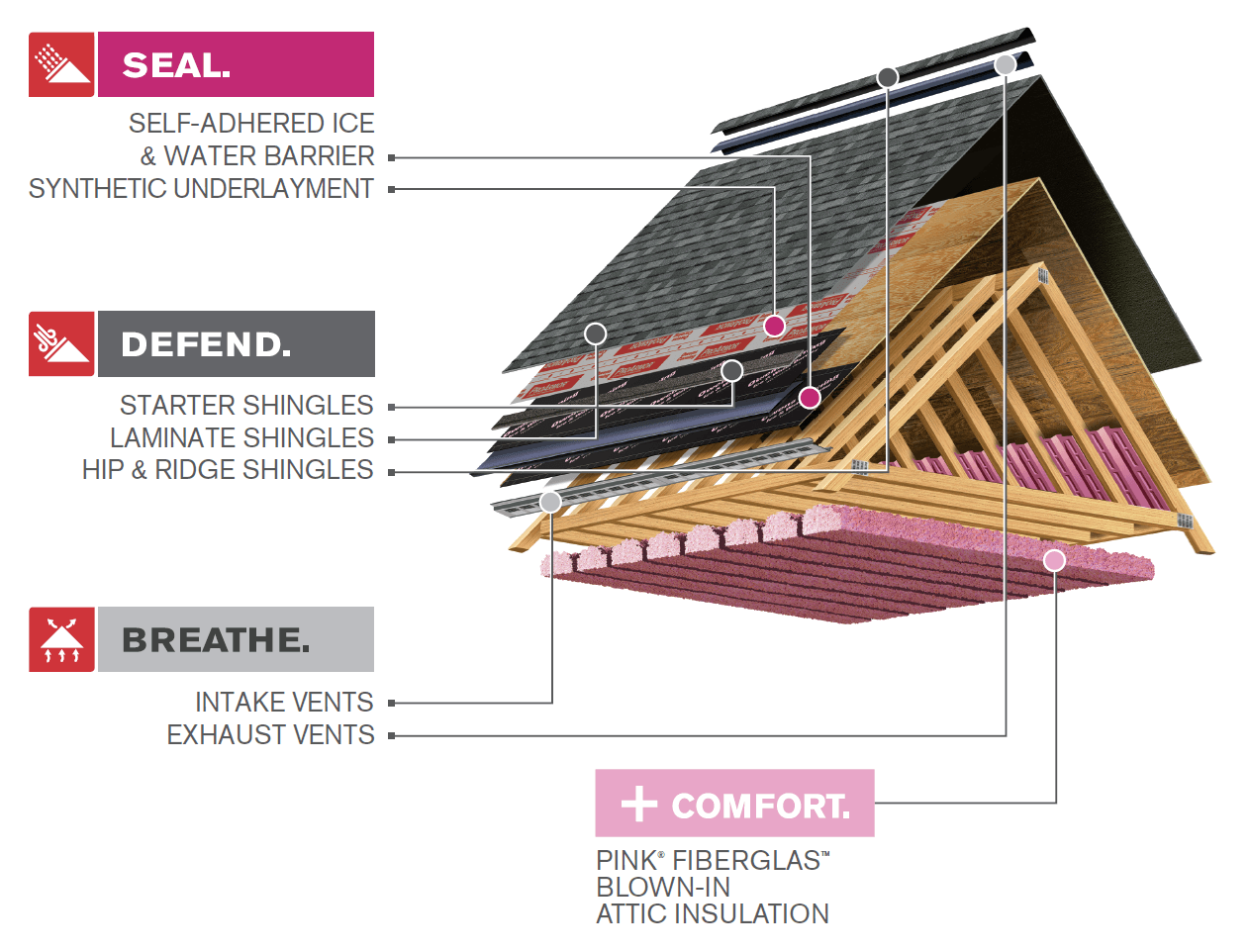
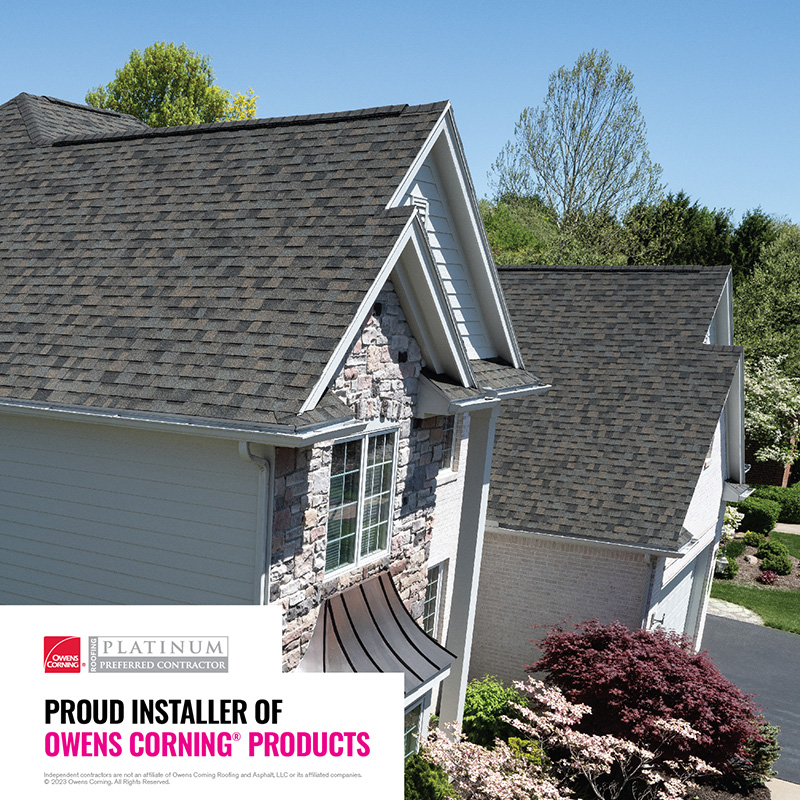
Why Choose an Owens Corning Platinum Preferred Roofing Contractor?
At The Third Estimate, we are proud to be an Owens Corning Platinum Preferred Contractor, a distinction held by less than 1% of roofing companies nationwide. This exclusive certification means you benefit from:
Learn more about the benefits of hiring an Owens Corning Platinum Preferred Contractor. Whether you need Roof Replacement & Repair, choosing the right professional for Roof Replacement & Repair can make a significant difference. A professional roofing contractor in Solon will deliver quality results.
The Benefits of Owens Corning Roofing Products
When you invest in an Owens Corning roofing system, you’re getting more than just shingles—you’re getting a complete Total Protection Roofing System® designed for:
Learn more about how Owens Corning roofing system is more than just a roof. Their roofing systems offer superior looks, longevity, and variety of choices to fit every project, from roof replacement to repair. Consulting with a roofing contractor in Solon can help you choose the best option.
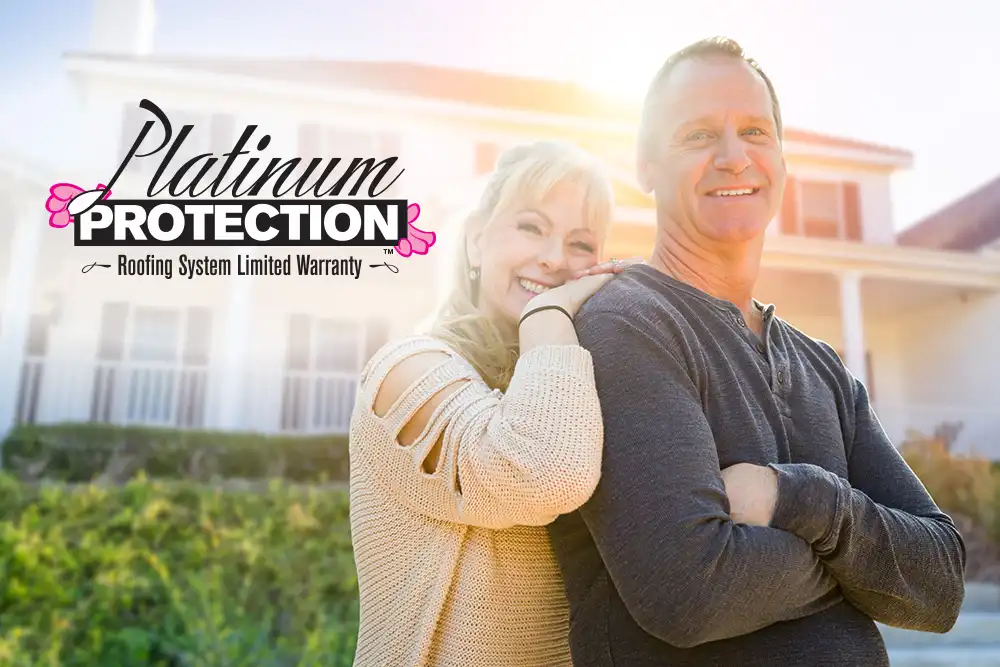
Decide With Confidence
Roofing FAQs – Get Answers to Your Biggest Questions About Roofing in Solon
We know that choosing a roofing company is a big decision. To help, we’ve answered some of the most common roofing questions homeowners ask when searching for a roofing company near me, roof replacement cost, and more.
How much does a roof replacement cost?
The cost of a new roof depends on factors like roof size, material choice, and labor costs. The Third Estimate offers free roofing estimates so you can get a detailed breakdown of pricing. We also offer flexible financing options to fit your budget.
How do I know when to replace my roof?
- Curled, cracked, or missing shingles
- Water stains on ceilings or walls
- Moss, algae, or mold growth on your roof
- Leaks or frequent repairs
- Your roof is 20+ years old
If you’re unsure, our roof inspections can assess the condition of your roof and help you decide if a repair or replacement is necessary. Roof replacement & repair can both be crucial in maintaining your home’s integrity. Be sure to hire a reputable roofing contractor in Avon for this work.
What are the benefits of hiring an Owens Corning Platinum Preferred Contractor?
- Exclusive warranties that only Platinum Preferred Contractors can offer
- Factory-certified installation that meets the highest quality standards
- Top-tier materials, like Duration® shingles with SureNail® Technology for superior wind resistance
- A trusted reputation, as fewer than 1% of roofing companies nationwide earn this certification
Learn More About the Platinum Preferred Difference, especially when it comes to roof replacement and repair.
How long does a roof replacement take?
- A typical roof replacement takes one to two days, depending on the size and complexity of the roof.
- Factors like weather conditions and material type can also impact the timeline. Roof replacement & repair projects need careful planning.
- Our team works efficiently to minimize disruption while ensuring a high-quality installation.
See below for a timeline of what to expect throughout your roof replacement & repair project with a roofing contractor in Avon.
What type of roofing materials do you offer?
- Architectural asphalt shingles (high durability & weather resistance)
- Metal roofing (energy-efficient & long-lasting)
- Specialty roofing materials (tailored to your home’s style & needs)
Each material has different benefits, and our experts can help you choose the best option for your home’s roof replacement & repair needs. A roofing contractor in Avon can guide you through the selection process.
Why should I choose The Third Estimate for my roofing project?
- We are an Owens Corning Platinum Preferred Contractor
- We offer industry-leading warranties & superior materials
- We have hundreds of 5-star reviews from satisfied customers
- We provide free estimates & financing options to fit your budget
- Our team is experienced, local, and dedicated to quality craftsmanship
Do you offer financing for roof replacements?
- Yes! We understand that a new roof is a major investment, which is why we offer flexible financing options to make it more affordable.
- Speak with our team to learn about financing plans that fit your needs, whether it’s for roof replacement or repair. A trusted roofing contractor in Avon can assist you with this process.
Will my homeowners insurance cover roof replacement?
- Insurance may cover a roof replacement if the damage is due to storms, hail, wind, or other covered events.
- Wear and tear or an aging roof typically won’t be covered.
- We have a dedicated team of claims specialists to help you navigate the claims process if you need assistance with roof replacement & repair.
Do you have special promotions or discounts?
- Yes, we often have special promotions which can help bring your roof replacement & repair cost down.
- Check out our Promotions page to see if any of these deals apply to your project.
- Make sure to mention deals to your sales representative or when you call us.
When to Replace Your Roof in Solon, OH:
9 Signs You Can’t Ignore
1. Your roof is more than 20 years old
Depending on the materials used, the lifespan of your roof can vary from 20 to 50 years. If it’s older than 20 years, it’s a good idea to inspect it and get it replaced. The roof plays an important role in protecting the rest of the house from the water and other elements. If the roof is failing, you may have to make expensive repairs to avoid structural damage.
If you see a lot of dark streaks on the roof, it may mean algae growth. Algae do not necessarily mean that your roof is in bad shape, but it’s another warning sign. You may also notice that your roof is springy. This is a sign of structural damage.
Types of Roofing & Lifespan: Choosing the Best Roof for Your Home
Your roof is one of the most important investments in your home. The right roofing material can enhance durability, energy efficiency, and protection against the elements. Below, we break down the most popular roofing options, their benefits, and expected lifespans to help you make an informed decision.
Asphalt Shingles: The Most Popular Roofing Choice in America
Asphalt shingles are the most common and affordable roofing option for homeowners. Made from fiberglass and bitumen sealant, these shingles offer excellent protection against harsh weather, including snow, wind, and UV rays. They come with warranties ranging up to 25 years.
Types of Asphalt Shingles & Their Lifespan:
- 3-Tab Shingles – Budget-friendly and designed to last 15-20 years.
- Architectural Shingles – A higher-quality option with a lifespan of 20-30 years but at a greater cost.
- Premium Shingles – The most durable and expensive option, lasting 25-40 years with superior weather resistance.
Metal Roofing: Durable & Energy-Efficient
Metal roofs are known for their longevity and energy efficiency, reflecting heat to help lower cooling costs. Depending on the type of metal used, these roofs can last up to 50 years or more, making them a great long-term investment.
Types of Metal Roofs & Their Lifespan:
- Standing Seam Metal Roofs – The most common residential metal roofing option, designed to last 50 years and withstand winds over 100 mph.
- Ribbed Metal Panels – A more affordable alternative to standing seam roofs, though their durability varies.
- Stone-Coated Steel – Extremely durable, withstanding wind speeds up to 155 mph and lasting 30-50 years. This option is popular in hurricane-prone areas.
Slate Roofing: The Longest-Lasting Roof Option
Slate roofs are one of the most durable roofing choices, with a lifespan of 75-200 years. These natural stone tiles are highly resistant to moisture, weathering, and extreme conditions, requiring minimal maintenance. If you’re looking for a roofing solution that can last a lifetime, slate is an excellent choice.
Factors That Affect Roof Longevity
Several factors influence how long your roof will last, including:
✅ Material Quality – Higher-quality materials tend to last longer and withstand weather better.
✅ Installation Standards – Proper installation by experienced professionals ensures maximum durability.
✅ Weather Exposure – Frequent storms, high winds, and UV exposure can shorten a roof’s lifespan.
2. You’ve had multiple leaks or other damage
Having a leaky roof can cause big problems. Not only can it ruin your belongings and make your home unlivable, but it can also be dangerous. In addition, it can damage your attic, which can affect your insulation and stored items. Luckily, there are a few an simple things you can do to avoid a leaky roof in the first place.
One of the essential components of your house is its roof, which needs to be maintained. Keeping it in good condition can save you money in the long run. If you have a leak, contact a roofing expert right away.
The roof’s most obvious function is to keep your home dry. However, leaks are common and can cause serious damage to your home.
Most common causes of roof leaks are:
- Around chimneys and skylights: Chimneys and skylights are two of the most common places for roofs to leak. Make sure that there are no cracks or holes in the flashing around these areas.
- Valleys: Valleys are the “V” shaped areas where two slopes of the roof come together. If they’re not properly sealed, water can easily enter your home through the valleys.
- Around vents and pipes: Vents and pipes are another common place for roofs to leak. Be sure to check the sealant around these areas and make sure there are no cracks or holes.
- Roof edges: The edge of your roof is another place where water can easily enter your home. Make sure the gutters and downspouts are securely attached to the edge of the roof and that there are no gaps.
- Shingles: Shingles can also be a source of leaks if they’re cracked or missing. Inspect your shingles regularly and have them repaired or replaced as soon as you notice any damage.
2. You’ve had multiple leaks or other damage
Having a leaky roof can cause big problems. Not only can it ruin your belongings and make your home unlivable, but it can also be dangerous. In addition, it can damage your attic, which can affect your insulation and stored items. Luckily, there are a few an simple things you can do to avoid a leaky roof in the first place.
One of the essential components of your house is its roof, which needs to be maintained. Keeping it in good condition can save you money in the long run. If you have a leak, contact a roofing expert right away.
The roof’s most obvious function is to keep your home dry. However, leaks are common and can cause serious damage to your home.
Most common causes of roof leaks are:
- Around chimneys and skylights: Chimneys and skylights are two of the most common places for roofs to leak. Make sure that there are no cracks or holes in the flashing around these areas.
- Valleys: Valleys are the “V” shaped areas where two slopes of the roof come together. If they’re not properly sealed, water can easily enter your home through the valleys.
- Around vents and pipes: Vents and pipes are another common place for roofs to leak. Be sure to check the sealant around these areas and make sure there are no cracks or holes.
- Roof edges: The edge of your roof is another place where water can easily enter your home. Make sure the gutters and downspouts are securely attached to the edge of the roof and that there are no gaps.
- Shingles: Shingles can also be a source of leaks if they’re cracked or missing. Inspect your shingles regularly and have them repaired or replaced as soon as you notice any damage.
2. You’ve had multiple leaks or other damage
Having a leaky roof can cause big problems. Not only can it ruin your belongings and make your home unlivable, but it can also be dangerous. In addition, it can damage your attic, which can affect your insulation and stored items. Luckily, there are a few an simple things you can do to avoid a leaky roof in the first place.
One of the essential components of your house is its roof, which needs to be maintained. Keeping it in good condition can save you money in the long run. If you have a leak, contact a roofing expert right away.
The roof’s most obvious function is to keep your home dry. However, leaks are common and can cause serious damage to your home.
Most common causes of roof leaks are:
- Around chimneys and skylights: Chimneys and skylights are two of the most common places for roofs to leak. Make sure that there are no cracks or holes in the flashing around these areas.
- Valleys: Valleys are the “V” shaped areas where two slopes of the roof come together. If they’re not properly sealed, water can easily enter your home through the valleys.
- Around vents and pipes: Vents and pipes are another common place for roofs to leak. Be sure to check the sealant around these areas and make sure there are no cracks or holes.
- Roof edges: The edge of your roof is another place where water can easily enter your home. Make sure the gutters and downspouts are securely attached to the edge of the roof and that there are no gaps.
- Shingles: Shingles can also be a source of leaks if they’re cracked or missing. Inspect your shingles regularly and have them repaired or replaced as soon as you notice any damage.
